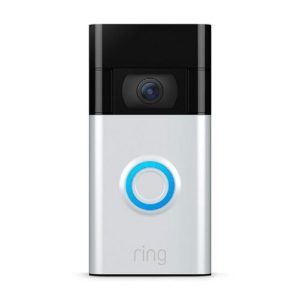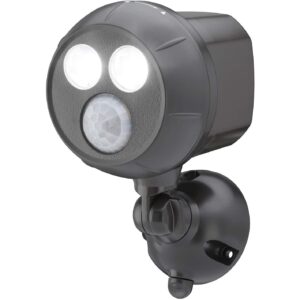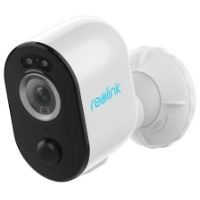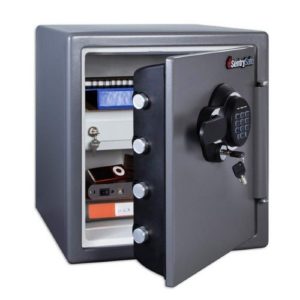Decorating your new home is definitely more fun than setting up security measures. But burglars can strike when you least expect it, so home security should be a top priority. To help you get back to the fun stuff, here are 11 simple things you should do right away to secure your new home.
Simple ways to secure your new home
SafeWise experts have years of firsthand experience testing the products we recommend. Learn how we test and review.
Here are 11 easy ways to secure your home
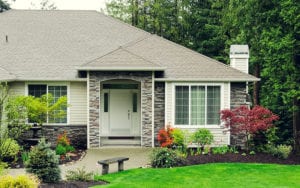
Check out our handy printable checklist here:
1. Secure the doors
Don’t help a burglar stroll in through the front door. Inspect all of your exterior doors to make sure the door frames are strong, the hinges are protected, and—if your door has a mail slot—that someone can’t reach through it to unlock the door.
If you're moving into a residence that someone else used to call home, change the door locks. That way you won't have strangers out there with a key to your house, and you can make sure your locks are the best on the market.
Here are some quick reinforcements we recommend to help you shore up these vital entryways.
- Install a deadbolt.
- Add a strike plate.
- Upgrade to smart locks.
- Boost security with a video doorbell.
Intruders love sliding doors, so make sure yours are protected. You can go old-school and use a window bar or dowel in the track to keep the door from being forced open. If you want a high-tech solution, add a door sensor or glass break sensor. These will alert you if the glass door is tampered with—and should scare off thieves.
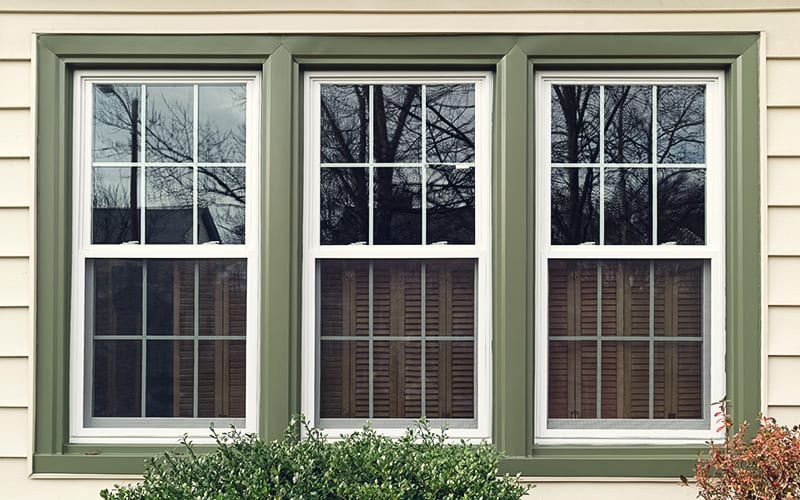
2. Lock the windows
According to theft expert Dr. Ben Stickle, windows are "a common entry point for criminals" and may be left shut but unlocked by the previous homeowner. Plus, manufacturer latches on windows aren’t always effective—and sometimes they’re downright flimsy.
If you don’t like the looks of your window latches, beef up security with aftermarket window locks or key-operated levers. But you don’t have to stop there.
We have some other good ideas to help make your windows burglar-proof.
- Reinforce glass with window security film.
- Install window or glass break sensors.
- Add window bars.
- Plant prickly bushes under ground-floor windows (but be sure to keep them trimmed).

3. Light up the landscape
Vandals, burglars, and other criminals don’t like to be in the spotlight. Keep them at bay with ample outdoor lighting. Place lights around your front and back yards, along footpaths, and near the garage and other outdoor structures. Not only will you make intruders skittish, you’ll also cut down your risk of a stumble on your way up the front steps.
Make your outdoor security lights even more effective with these tips:
- Use motion-activated lights.
- Save energy with solar-powered lights.
- Use a smart outlet to put outdoor lights on a timer.
- Set up schedules with smart light bulbs.

4. Set up a security system
Your new home should have some form of a security system, whether it’s a basic DIY system or one that comes with professional monitoring and home automation features. Today there are plenty of home security options for every budget and every level of protection.

5. Don’t forget the garage
This entry point to your home is becoming more popular with criminals. And even if they can’t access your house, chances are you have plenty of good stuff stored in the garage. Make it a habit to lock all doors to the garage—both interior and exterior.
You may also consider keeping your garage door opener in the house. That way, a burglar can’t grab it out of your car. And if you use a security code to open the garage, make sure you keep it secret and never enter it in front of delivery people, neighbours, or anyone else.
Here are some more easy ways to secure the garage.
- Upgrade to a smart garage door opener.
- Cover windows to hide the goodies inside.
- Secure garage doors with extra locks.
- Install a driveway alarm.

6. Lock down your Wi-Fi network
Your home wireless network is a doorway to your personal and financial information. And if you use home automation, it can also make your house vulnerable to a break-in. If your Wi-Fi network is connected to smart home gadgets or your security system, it could give criminals direct access to your home.
But you don't have to leave yourself vulnerable. Use our tips and tricks to keep hackers off your home network.
- Secure your wireless router.
- Enable WPA (Wi-Fi Protected Access) or WPA2 encryption.
- Rename and hide your home network.
- Use a firewall.
- Install antivirus and anti-malware protection.
- Create strong passwords.
If you’ve got little ones, chances are they go online for both homework and fun. Keep them safe from online predators and cyberbullies with a parental control app, router, or software package. These tools can even help you limit screen time and enforce device-free family dinners.
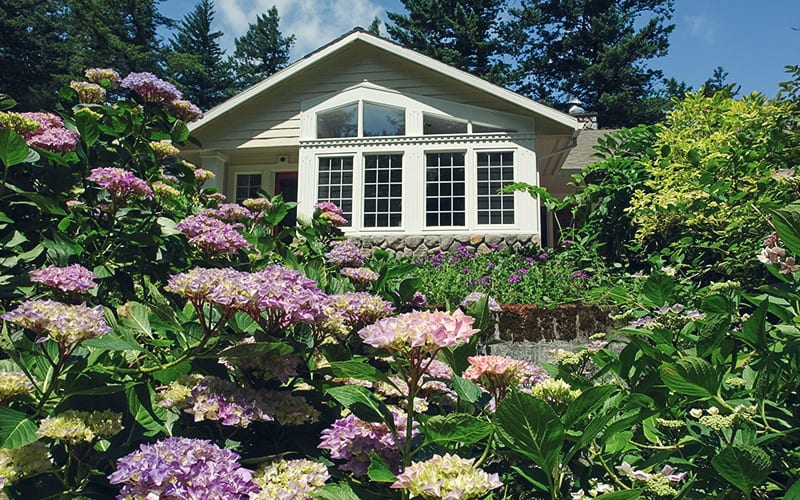
7. Eliminate hiding places
Trees and shrubs may give your house curb appeal, but they also give burglars a handy place to hide. Trim down trees and plants close to your home that could be used for cover. Opt for smaller flowers and bushes instead. If you have trees near windows, either remove them or reinforce those windows with extra security.
And don’t neglect the rest of your home’s exterior. Use these best practices to keep things locked up tight.
- Always put away stools and ladders.
- Lock gates, sheds, and other outdoor buildings.
- Don’t tempt thieves by leaving pricey goods on display in the yard.
- Add security signs and stickers—even if you don't have a security system.

8. Add security cameras
You’ve probably seen headlines about burglars and would-be package thieves being foiled by security camera footage. This is one home security solution that works as both a deterrent and a means to get justice. You can get security cameras that are part of a complete home security system, or you can use cameras that work on their own.
Whichever way you go, we recommend using a security camera with a mobile app, so you can see footage in real time and store it if you ever need to go to the police.
Check out our other must-have features:
- Motion detection
- Night vision
- Wi-Fi capability
- Two-way talk
- Local or cloud storage
- Weatherproof rating (for outdoor cameras)
9. Get a safe
In the event that someone gets by your other home security strategies, make sure that valuables are protected. An in-home safe is a secure depository for everything from jewellery to vital documents like passports. You want a safe that is fire-resistant, waterproof, and heavy enough that a thief can’t walk away with it.
Follow these suggestions to get the most protection from your safe:
- Look for safes with redundant locks (that’s two locks on one safe).
- Select the right size safe for the valuables you want to protect.
- Decide if you want a portable safe or one that’s anchored.
10. Use home automation
If you’ve been tempted to turn your regular house into a smart home, security is one compelling reason to follow through. Home automation gives you remote (or scheduled) control of lights, electronic door locks, security cameras, smoke alarms, and other safety devices. You can get real-time alerts about suspicious activity so you can respond quickly and thwart potential thieves.
Here are some of our favourite ways to use home automation to increase security:
- Schedule lights (and your TV) to turn on and off when you’re on vacation.
- Scare away porch pirates with two-way talk through a smart doorbell.
- Get an instant video feed whenever someone walks up your driveway.
- Check on a smoke or carbon monoxide alarm and cancel false alarms from your smartphone.
11. Prevent house fires
Do what you can to prevent a fire in your new home.
- Inspect current fire alarms and CO detectors to make sure they're working.
- Install new detectors where necessary.
- Check the charge and expiration date on current fire extinguishers.
- Buy new fire extinguishers if necessary.
- Call a professional chimney inspector before using the fireplace.
Don't forget to make a new fire exit plan based on your home's layout, complete with fire escape ladders for second-storey bedrooms.
Final word
Figuring out how to secure your home doesn’t have to be a chore. Use these tips to get started. And relax—you don’t have to do everything at once.
Identify which strategies are most important to you, and make a plan to add the rest later. Being aware of potential security risks and taking action early is the best way to keep your home and loved ones safe.
And if you’ve got a great security tip that we missed, let us know in the comments!
